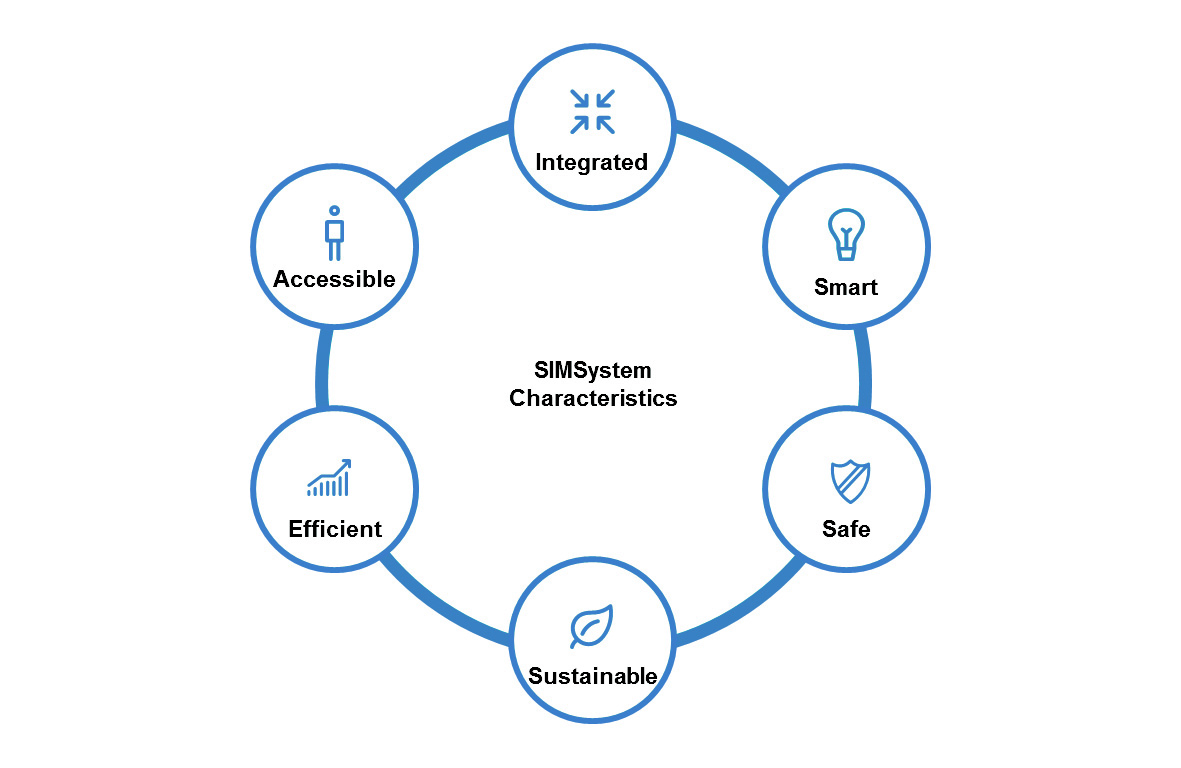Seamless Integrated Mobility will see buses, trains and autonomous cars working in sync to reduce congestion. (Photo: Reuters/Joe White
Imagine you’re running late for an important meeting across town. It’s rush hour and a section of road has collapsed, wreaking havoc across the city. What are your options?
In most transport systems, there wouldn’t be many – and getting the information you need to make the right decision would be hard to come by.
The truth is that today’s transport systems are under enormous strain. Rail and highway infrastructure in many areas is ageing. Populations are growing fast in places that have some of the biggest transport challenges, and the explosion of online shopping is putting pressure on traditional delivery channels.
In the face of these challenges, new transport approaches, including ridesharing and drone delivery have sprung up. But isolated solutions like these won’t integrate the kind of information commuters require to make informed decisions. There has to be an integrated public and private response to today’s mobility challenges, and the will to create a transport system for the future that is truly co-ordinated – i.e. a Seamless, Integrated Mobility system, or a SIMSystem. In such a system, people and goods would move more efficiently because physical and digital assets would be interoperable, and the friction caused by non-integrated components would be eliminated.
As part of the Shaping the Future of Mobility Initiative, the World Economic Forum has embarked on a project to better understand the need for and characteristics of such a system. Working with a range of key shapers of the mobility ecosystem — from established technology enterprises to startups to government officials — the initiative seeks to visualise a SIMSystem and its opportunities, identify the challenges and requirements, and provide guiding principles for real action. Without concerted action now, an integrated mobility system will either fail to emerge or fail to emerge quickly enough to address the world’s looming mobility challenges. It may also emerge in a way that fails to meet the needs of governments, the private sector and users.
The first step on a journey of this magnitude is to motivate stakeholders with a vision of how a SIMSystem will benefit society. Enhanced mobility drives inclusive growth through increased access to healthcare, education and economic opportunity — not just for wealthy and healthy citizens, but also for elderly, blind and disadvantaged citizens. In a SIMSystem, governments, transport providers and users harness technology to seamlessly connect and exchange real-time information across the entire spectrum of transport modes — bus, shipping, rideshare, autonomous pod, bikeshare, air travel, rail, etcetera. Businesses make money. Cities reduce congestion. Citizens enjoy a higher quality of life.

Fourth Industrial Revolution technology is one of the key factors making a new mobility ecosystem possible. The internet of things, smart sensors and machine learning enable disparate transportation systems to interact, predict and respond in various scenarios, from something as routine as planning a family holiday to reacting to a contagious disease outbreak. With technology, multi-layer interoperability among players, modes and geographies can yield a more convenient, affordable, clean, safe and accessible transportation network.
Any ambitious vision of transport must also consider rapid advancements in autonomous and driverless vehicles and drones. While these transport modes are still nascent, leaving them out of a potential model of a SIMSystem would be negligent and hardly aspirational.
Whatever form it takes, the implementation of a SIMSystem will require public-private collaboration. In our view of integrated mobility, these partnerships would set up protocols to address potential challenges, such as funding mechanisms and data-sharing. And with the evolution of a SIMSystem likely to be different across geographies, key stakeholders will be able to capitalise on models that are adaptable, and can be customised and scaled to their own particular needs.
In the initial phase of this project, we’ve tried to capture not only the need for and vision of integrated mobility, but also principles for enablement. What are the ideal conditions and actions that can make a SIMSystem a reality? Some of these include:
Governments serving in the role of conveners and gatekeepers to bring together public and private sector actors with potentially conflicting priorities and incentives;
Consolidation of decision rights into a centralised mobility authority that can address the complexity of transportation regulatory systems;
Evaluating the success of integration efforts by establishing outcome-oriented mobility measurement standards;
Cities operating as labs for SIMSystem pilots, with successful models then deployed and scaled in other geographies; and
Developing new governance models that can cope with the complexity of the emerging mobility marketplace.
These principles are part of what is ultimately a call to action to all entities impacted by mobility – a manifesto, if you will. And there are few entities that will not be affected, as mobility underpins nearly every facet of modern life. A wait-and-see approach will only make it harder, if not impossible, down the road to corral the one-off transport solutions that continue to spring up.
Seamless, integrated mobility — it is a daunting task. But if we start now, it is also a thrilling, once-in-a-generation opportunity to get the future of mobility right.
The first deliverable in the forum’s SIMSystem project – Designing a Seamless Integrated Mobility System (SIMSystem): A Manifesto for Transforming Passenger and Goods Mobility — will launch at Davos 2018, where we will be sharing the concept with public and private organisations from around the world to gain support for multiple pilots as early as next year.
This article was originally published on www.weforum.org
John Moavenzadeh is head of the Mobility Industries and System Initiative, and a member of the executive committee, World Economic Forum LLC.
Scott Corwin is managing director and a Future of Mobility Practice leader at Deloitte